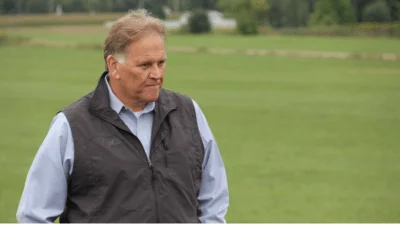Kalamazoo Public Schools | Free CCO Credit
Kalamazoo Public Schools | Free CCO Credit
“Canaries in the coal mine” refers to the practice of bringing birds into mines to serve as carbon monoxide detectors, but birds also can serve as “canaries in the coal mine” for the general ecological health of our communities.
Clemson University ornithologist and poet J. Drew Lanham visited Phoenix High School in September and shared his insights about birds and about how ornithology also can be used as a tool for examining society. Just weeks after his visit to Kalamazoo, Lanham was named a 2022 MacArthur Fellow, an award also known as the “Genius Grants.”
“A lot of what we talk about will be about how we identify birds, but it’s not just about how we identify birds — but how we identify with birds. I won’t just objectify birds as whats, but we will talk about birds as whos,” Lanham told students in teacher Dan Keto’s forensic science class and from the Newcomer Center in Phoenix.
“In many cultures, birds aren’t just things to count and watch through binoculars. They have very specific roles in culture and a lot of what I do today is to try and wind social consciousness into birding.”
Lanham is the Alumni Distinguished Professor of Wildlife Ecology Master Teacher at Clemson and a certified wildlife biologist in the department of forestry and environmental conservation. He is also the author of “The Home Place — Memoirs of a Colored Man’s Love Affair with Nature.” Lanham visited Phoenix, while in Kalamazoo to deliver a speech for the Kalamazoo Nature Center’s Terry Todd International Speaker Series.
It was Keto who brought up the term “canary in the coal mine,” telling students that the birds were used to warn miners of dangerous carbon monoxide levels in the mines. Air moves quickly through birds’ sensitive physiology, and if the canaries passed out or died, it was a warning to miners to abandon the area.
“Every bird you see today is in theory its own canary in the coal mine, they are our environmental indicators,” Keto said. “If you see birds in your neighborhood now and don’t see them years later, that tells us we’re doing something to our environment that’s not positive. Same with frogs, because they’re sensitive to chemicals, because they go through their skin so easily.
“By being aware of the world around you, you know if your neighborhood is being poisoned or if the environmental quality is going down.”
Lanham said that it is not just birds and other animals that are affected by changes to the environment. The quality of human life is impacted by issues such as water and air quality — and those negative issues more severely impact poor, racially segregated neighborhoods. The result in effect turns people — especially people of color — into “canaries in the coal mine” for communities.
“In Michigan, of course, everyone is talking about Flint (and the lead poisoning of the city’s water), but we know there are other communities that have the same problems,” Lanham said. “Look at Jackson, Mississippi; look at Memphis, Tennessee; look at Barnwell, South Carolina. Look at the rates of almost everything bad you can think of, on indigenous lands and reservations.”
Lanham, along with staff and volunteers from the Kalamazoo Nature Center and the Kalamazoo chapter of the Audubon Society, took the Phoenix students to the fields behind Phoenix to look for birds.
They observed blue jays, woodpeckers and a red tail hawk, as well as rabbits and deer in the nearby forest and the marsh created in a water retention pond. He showed the students the native plants that Keto had planted around the school and urged students to think about how changes in plants and insects can affect the health of the bird habitat around them.
While birds can be instruments indicating environmental foreboding, for Lanham they remain a joy. Taking time to be in nature, to enjoy their beauty and song, provides him with respite from the tragedies of the world. He still marvels at birds’ feats of strength and endurance, and he looks to them as a symbol of hope and possibility.
Lanham said he has been fascinated by birds since he was a child growing up in rural South Carolina.
“I came to love birds because I wanted to fly,” he said. “I wanted to be three things when I was a little kid. I wanted to be a cowboy. I wanted to be a fighter pilot and to fly P51 Mustangs specifically, and I wanted to be an ornithologist.”
But it wasn’t an easy path, because the media didn’t share images of people doing the things he dreamed of — and some people actively discouraged him from pursuing his dreams.
“I’d tell people I wanted to be an ornithologist and people would say, ‘What is that?’ and then, ‘Oh, Black people don’t do that.’ People had their eyes on me but they had different expectations of me because of how I appeared and the skin that I am proudly in.
“When we watch birds, when we’re out in nature we can be out in a way that joins us across time and space. There are birds flying over your head at night, that in a few days will be close to Antarctica. In thinking about that, think about who it is that you are, why do you do what you do, why are you here? Where do you want to be, what do you aspire to? Birds can bring all of that to us. Birds bring the world to us. Birds bring dreams to us.”
Original source can be found here.




 Alerts Sign-up
Alerts Sign-up